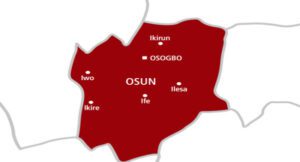
Osun Osogbo Grove: Savouring heritage components of nature and sacredness
By Yekeen Olawale Wakeel
Osun Osogbo sacred grove is an immovable cultural and natural heritage site, which was declared, and gazetted as a national monument in1965. The groove harbours many shrines; 16 sacred worship points, palaces, structures and sculptures dedicated to Osun and other Yoruba deities.
The groove contains about 450 species of plants and 15 animal species which are of economic and medicinal values. Some of the rare and endangered species of plants and animals abound therein. Notable are the mona and white throated monkeys, and putty-nosed and red-capped mangabey.
Other components of the sacred groove are the intangible heritage, which comprises oral history, myths and beliefs, worship, and spiritualism, festivals, songs, music and dances, traditional knowledge, education and indigenous technology. These are also some of the most important elements that complement the authenticity and integrity of Osun Osogbo sacred grove.
Osun Osogbo sacred Grove has a number of values attached to it and intangible heritage that complements the sacredness of the grave. The grove is located in Osogbo, a traditional town in the south-western Nigeria. It is a living and historic sacred grove of about seventy-five hectares of rainforest vegetarian, large area of undistributed primary forest with numerous species of plants and animals.
The grove is an exceptionally rich herbal pharmacy. The grove is of historical significance as it is the origin of Osogbo where the early founder of Osogbo, Oba Larooye Gbadewolu and Olutimehin, the great Elephants hunter first settled after their sojourn from Ipole-Amu in about 1570/1370 A.D.
The grove is a traditional sanctuary where different shrines, sculptures and structures have been erected to honour, celebrate and remember Osun and other Yoruba deities. It is a repository of the fundamental values of Osogbo people, and daily, weekly and annually deities in the grove conduct worship.
The grove is highly sacred sanctuary where daily weekly worship and annual festival takes place to celebrate and admonish the goodness of fertility and other Yoruba deities according to traditional beliefs and religion in August, every year, and therefore, became an annual festival is held in grove to rekindle the mystic bond of association between the Osun goodness the devotes and people of Osogbo.
In Osogbo sacred grove today, means a symbol of development of osogbo society from pre-historic beginning to the present. The Osogbo society was given birth to, by the grove and the name comes from their encounter with the goddess ‘’osa inu igbo’’ hence, Osogbo originated from the grove, the shrines temples rocks market tree animals sculpture and of course the river itself are major features in the grove.
These are still active in both the spiritual and physical well-being of Osogbo people.The most important among them is the sacred stool on which Larooye Gbadewolu, the first king sat to rule in the first palace in the grove followed by the shrines Osun where the head of the priestess otherwise known as the Yeye Osun can consult with the goddess.
The grove can also be regarded as a school of some kind where priests and priestesses as well as devotees are initiated into their religious callings. Membership into various cults such as the Ogboni herbal medicine and the Art of divination, the Ifa Oracle system are also imitated and taught in the grove.
The grove stands as a rare centre to traditional knowledge system and practices with significant socio-cultural Obligation of worship and appreciation of Osun and other deities and appreciation of Osun and inform of the well acclaimed Annual Osun Osogbo festival (an international tourism destination in Nigeria).
However, in 1950 an Austrian lady, Late Susanne Wenger having been initiated into Obatala Cult god of creation and creativity started the beautification of the groove in conjunction with other native artists through an organised body called Sacred Art movement. The coming of Wenger to Osogbo coincided with the period when shrines and grooves were being desecrated, looted or destroyed by religious fundamentalist and land speculators.
All the buildings were to reflect traditional spiritualist blessings. Later, some of these were reinforced with iron and cement to create heavy masterpieces of modern sacred art, which successfully stopped encroachment into the grove, revitalised the traditional practices and cultural value of Osogbo and Yoruba people.
Traditional Management was originally based on myth and beliefs system which has conferred status of sacredness on the grove as abode of Osun and Yoruba deities and so regarded as sacred forest and hallowed ground.
All plants and animals were regarded as “Totemic Children’’ of Osun and other deities, hence the traditional sanctions of no fishing, hunting, felling of trees and other unwholesome activities customary laws and traditions/religions sanctions were employed on erring offenders.
Different works were constructed in a manner that will spontaneously tell you the history and nature of deities as well as an authentic illustration of the Osun Osogbo sacred grove which has a number of values attached to it.
These intrinsic values are the intangible heritage that complement the immovable cultural and natural heritage they have been documented and preserved as part of the fundamental values of the people of Osogbo which includes historical, spiritual, religious, cultural and economic value.
Yekeen Olawale Wakeel, Chief Museum Education Officer, National Museum, Ile-Ife.



